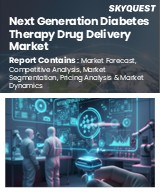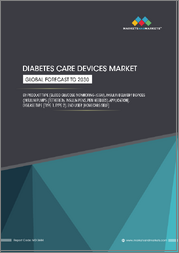
|
시장보고서
상품코드
1631141
인슐린 시장 규모, 점유율, 동향 분석 보고서 : 제품 유형별, 용도별, 유통 채널별, 지역별, 부문 예측(2025-2030년)Insulin Market Size, Share & Trends Analysis Report By Product (Rapid-Acting Insulin, Long-Acting Insulin, Combination Insulin, Biosimilar), By Application, By Type, By Distribution Channel, By Region, And Segment Forecasts, 2025 - 2030 |
||||||
인슐린 시장 성장과 동향:
Grand View Research, Inc.의 최신 보고서에 따르면, 세계 인슐린 시장 규모는 2030년까지 232억 1,000만 달러에 달할 것으로 추정되며, 2025년부터 2030년까지 연평균 3.7%의 CAGR로 성장할 것으로 예상됩니다.
이 시장은 Novo Nordisk A/S, Sanofi, Eli Lilly and Company 등의 기업이 지배하는 과점 시장입니다. 당뇨병 유병률의 증가와 인슐린 제제의 발전이 성장을 촉진하는 주요 요인으로 작용하고 있습니다. 그러나 바이오시밀러와 GLP-1 RA와 같은 제2형 당뇨병 치료제의 존재는 시장 성장을 어느 정도 둔화시킬 수 있습니다.
당뇨병은 세계에서 가장 빠르게 증가하고 있는 만성질환 중 하나입니다. 그 유병률은 지난 수십 년 동안 꾸준히 증가하고 있습니다. 중저소득 국가에서 유병률이 빠르게 증가하고 있으며, 이들 국가에서는 성인 4명 중 3명이 당뇨병을 앓고 있으며, 2021년 국제당뇨병연맹(IDF) 자료에 따르면 2030년에는 약 6억 4,300만 명, 2045년에는 7억 8,300만 명이 당뇨병을 앓을 것으로 예상하고 있습니다. 또한, 노인 인구와 비만 인구의 증가도 성장을 촉진하는 요인 중 하나입니다. 비만 인구는 제2형 당뇨병에 걸릴 위험이 있으며, WHO에 따르면 2020년에는 19억 명의 성인이 과체중으로 해당 연령대 인구의 39%를 차지했습니다.
인슐린 전달 시스템에서 제형의 발전이 이루어지고 있으며, 그 출시는 예측 기간 동안 시장을 견인할 것으로 예상되며, 2019년 12월에는 Tandem Diabetes Care의 상호 운용 가능한 장치인 Control-IQ가 미국에서 FDA의 판매 승인을 획득했습니다. 승인되었습니다. 이는 다른 상호 운용 가능한 장치와 함께 사용할 수 있는 자동 인슐린 투여 알고리즘입니다.
Eli Lilly and Company, Novo Nordisk A/S, Sanofi의 상위 3개 제조사가 독점하고 있습니다. 이들 기업이 시장 점유율의 90% 이상을 차지하고 있습니다. 시장의 과점화와 특허 보호로 인해 인슐린의 가격이 비쌉니다. 따라서 제품의 높은 비용이 산업 성장을 저해할 수 있습니다.
COVID-19는 업계에 악영향을 미쳤습니다. 당뇨병과 같은 만성질환을 앓고 있는 사람들은 응급 의료 및 일상 의료에 큰 지장을 받았으며, NCBI의 기사에 따르면 미국 내 약 3,000만 명의 당뇨병 환자 중 약 750만 명이 인슐린에 의존하고 있다고 합니다. 인슐린 배급과 사재기는 이미 널리 퍼져 있는 문제이며, 팬데믹 기간 동안 공급에 대한 우려로 인해 더욱 증가했습니다. 그러나 일부 국가에서는 2020년 3분기 이후 COVID-19의 영향이 감소하면서 시장 회복에 힘을 실어주었습니다.
인슐린 시장 보고서 하이라이트
- 지속형 인슐린 제제가 시장을 장악하고 있으며, 2024년 매출 점유율은 52.4%로 가장 큰 비중을 차지했습니다.
- 1형 당뇨병 부문은 2024년 78.8%의 가장 큰 매출 점유율을 차지하며 시장을 장악했습니다.
- 아날로그 인슐린 부문은 인간 인슐린에 대한 우위를 바탕으로 2024년 87.3%의 최대 매출 점유율을 차지하며 시장을 장악했습니다.
- 소매 약국 부문은 2024년 90.0%의 가장 큰 매출 점유율을 차지하며 시장을 장악했습니다.
목차
제1장 조사 방법과 범위
제2장 주요 요약
제3장 인슐린 시장 변수, 동향, 범위
- 시장 계통 전망
- 상부 시장 전망
- 관련/부수 시장 전망
- 시장 역학
- 시장 성장 촉진요인 분석
- 시장 성장 억제요인 분석
- 인슐린 시장 분석 툴
- 업계 분석 - Porter's Five Forces 분석
- PESTEL 분석
제4장 인슐린 시장 : 제품별 추정·동향 분석
- 부문 대시보드
- 인슐린 시장 : 제품별 변동 분석
- 인슐린 시장 : 제품별 전망
- 시장 규모와 예측 및 동향 분석(2018-2030년)
- 속효성 인슐린
- 지속성 인슐린
- 복합 인슐린
- 바이오시밀러
- 기타
제5장 인슐린 시장 : 유형별 추정·동향 분석
- 부문 대시보드
- 인슐린 시장 : 유형별 변동 분석
- 인슐린 시장 : 유형별 전망
- 시장 규모와 예측 및 동향 분석(2018-2030년)
- 인간 인슐린
- 인슐린 아날로그
제6장 인슐린 시장 : 용도별 추정·동향 분석
- 부문 대시보드
- 인슐린 시장 : 용도별 변동 분석
- 인슐린 시장 : 용도별 전망
- 시장 규모와 예측 및 동향 분석(2018-2030년)
- 1형 당뇨병
- 2형 당뇨병
제7장 인슐린 시장 : 유통 채널별 추정·동향 분석
- 부문 대시보드
- 인슐린 시장 : 유통 채널별 변동 분석
- 인슐린 시장 : 유통 채널별 전망
- 시장 규모와 예측 및 동향 분석(2018-2030년)
- 병원
- 소매 약국
- 기타
제8장 인슐린 시장 : 지역별 추정·동향 분석
- 지역 대시보드
- 시장 규모와 예측 및 동향 분석(2018-2030년)
- 북미
- 미국
- 캐나다
- 멕시코
- 유럽
- 영국
- 독일
- 프랑스
- 이탈리아
- 스페인
- 노르웨이
- 스웨덴
- 덴마크
- 아시아태평양
- 일본
- 중국
- 인도
- 호주
- 한국
- 태국
- 라틴아메리카
- 브라질
- 아르헨티나
- 중동 및 아프리카
- 남아프리카공화국
- 사우디아라비아
- 아랍에미리트
- 쿠웨이트
제9장 경쟁 구도
- 시장 진출 기업 분류
- 주요 시장 진출 기업의 최근 동향과 영향 분석
- 기업 시장 점유율 분석, 2024년
- 주요 기업 개요
- Novo Nordisk A/S
- Eli Lilly and Company
- Sanofi
- Biocon Ltd
- Wockhardt
- Boehringer Ingelheim International GmbH
- Julphar
- United Laboratories International Holdings Limited
- Tonghua Dongbao Pharmaceutical Co. Ltd.
Insulin Market Growth & Trends:
The global insulin market size is estimated to reach USD 23.21 billion by 2030, registering to grow at a CAGR of 3.7% from 2025 to 2030 according to a new report by Grand View Research, Inc. It is an oligopolistic space dominated by companies such as Novo Nordisk A/S, Sanofi, and Eli Lilly and Company. The increasing incidence of diabetes and formulation advancements in insulin delivery are the primary factors driving growth. However, the presence of biosimilars and drugs such as GLP-1 RAs for the treatment of type 2 diabetes can slow down market growth to a certain extent.
Diabetes is one of the fastest-growing chronic diseases in the world. Its prevalence has increased steadily over the past few decades. The prevalence of the disease is growing rapidly in low- and middle-income countries; three in four adults live with diabetes in these countries. According to the International Diabetes Federation (IDF) data from 2021, approximately 643 million individuals will have diabetes by 2030 and 783 million by 2045. In addition, the increase in geriatric and obese populations is another factor driving growth. The overweight population is at risk of developing type 2 diabetes mellitus. According to WHO, in 2020, 1.9 billion adults were found to be overweight, accounting for 39% of the population within that age group.
Formulation advancements in insulin delivery systems are being developed, the release of which is likely to propel the market over the forecast period. In December 2019, Tandem Diabetes Care's Control-IQ, an interoperable device, received FDA authorization for marketing in the U.S. It is an automated insulin dosing algorithm that can be used with other interoperable devices.
The top three manufacturing companies, Eli Lilly and Company, Novo Nordisk A/S, and Sanofi, hold a monopoly. These companies hold more than 90% of the market share. Owing to the oligopolistic nature of the market and patent protection, the cost of insulin is high. Hence, the high cost of products could impede industry growth.
The COVID-19 pandemic caused a detrimental impact on the industry. Individuals with chronic illnesses, such as diabetes, have experienced substantial disruptions in emergency and routine medical care. According to an NCBI article, out of ~30 million diabetic patients in America, about 7.5 million are dependent on insulin. Insulin rationing or hoarding has already been a rampant issue, which increased further amid the pandemic due to supply concerns. However, in several countries, the effect of COVID-19 declined to post the third quarter of 2020, which helped the market regain traction.
Insulin Market Report Highlights:
- The long-acting insulin segment dominated the market and accounted for the largest revenue share of 52.4% in 2024.
- The type 1 diabetes mellitus segment dominated the market and accounted for the largest revenue share of 78.8% in 2024, driven by the rising incidence of this autoimmune condition among children and adults.
- The analog insulin segment dominated the market and accounted for the largest revenue share of 87.3% in 2024 due to its advantages over human insulin.
- The retail pharmacy segment dominated the market and accounted for the largest revenue share of 90.0% in 2024.
Table of Contents
Chapter 1. Methodology and Scope
- 1.1. Market Segmentation and Scope
- 1.2. Segment Definitions
- 1.2.1. Product
- 1.2.2. Type
- 1.2.3. Application
- 1.2.4. Distribution Channel
- 1.2.5. Regional Scope
- 1.2.6. Estimates and forecasts timeline
- 1.3. Research Methodology
- 1.4. Information Procurement
- 1.4.1. Purchased database
- 1.4.2. GVR's internal database
- 1.4.3. Secondary sources
- 1.4.4. Primary research
- 1.4.5. Details of primary research
- 1.5. Information or Data Analysis
- 1.5.1. Data analysis models
- 1.6. Market Formulation & Validation
- 1.7. Model Details
- 1.7.1. Commodity flow analysis (Model 1)
- 1.7.2. Approach 1: Commodity flow approach
- 1.7.3. Volume price analysis (Model 2)
- 1.7.4. Approach 2: Volume price analysis
- 1.8. List of Secondary Sources
- 1.9. List of Primary Sources
- 1.10. Objectives
Chapter 2. Executive Summary
- 2.1. Market Outlook
- 2.2. Segment Outlook
- 2.3. Regional outlook
- 2.4. Competitive Insights
Chapter 3. Insulin Market Variables, Trends & Scope
- 3.1. Market Lineage Outlook
- 3.1.1. Parent Market Outlook
- 3.1.2. Related/ancillary market outlook
- 3.2. Market Dynamics
- 3.2.1. Market Driver Analysis
- 3.2.1.1. Increase in prevalence of diabetes
- 3.2.1.2. Increase in geriatric and obese population
- 3.2.1.3. Formulation advancements in insulin delivery systems
- 3.2.2. Market Restraint Analysis
- 3.2.2.1. High cost of insulin
- 3.2.2.2. Poor reimbursement policies
- 3.2.2.3. Launch of insulin biosimilars and increasing penetration of glp-1 agonists
- 3.2.1. Market Driver Analysis
- 3.3. Insulin Market Analysis Tools
- 3.3.1. Industry Analysis - Porter's
- 3.3.1.1. Bargaining power of suppliers
- 3.3.1.2. Bargaining power of buyers
- 3.3.1.3. Threat of substitutes
- 3.3.1.4. Threat of new entrants
- 3.3.1.5. Competitive rivalry
- 3.3.2. PESTEL Analysis
- 3.3.2.1. Political landscape
- 3.3.2.2. Economic landscape
- 3.3.2.3. Social landscape
- 3.3.2.4. Technological landscape
- 3.3.2.5. Environmental landscape
- 3.3.2.6. Legal landscape
- 3.3.1. Industry Analysis - Porter's
Chapter 4. Insulin Market: Product Estimates & Trend Analysis
- 4.1. Segment Dashboard
- 4.2. Insulin Market: Product Movement Analysis
- 4.3. Insulin Market by Product Outlook (USD Million)
- 4.4. Market Size & Forecasts and Trend Analyses, 2018 to 2030 for the following
- 4.5. Rapid-Acting Insulin
- 4.5.1. Market Revenue Estimates and Forecasts, 2018 - 2030 (USD Million)
- 4.6. Long-Acting Insulin
- 4.6.1. Market Revenue Estimates and Forecasts, 2018 - 2030 (USD Million)
- 4.7. Combination Insulin
- 4.7.1. Market Revenue Estimates and Forecasts, 2018 - 2030 (USD Million)
- 4.8. Biosimilar
- 4.8.1. Market Revenue Estimates and Forecasts, 2018 - 2030 (USD Million)
- 4.9. Others
- 4.9.1. Market Revenue Estimates and Forecasts, 2018 - 2030 (USD Million)
Chapter 5. Insulin Market: Type Estimates & Trend Analysis
- 5.1. Segment Dashboard
- 5.2. Insulin Market: Type Movement Analysis
- 5.3. Insulin Market by Type Outlook (USD Million)
- 5.4. Market Size & Forecasts and Trend Analyses, 2018 to 2030 for the following
- 5.5. Human Insulin
- 5.5.1. Market Revenue Estimates and Forecasts, 2018 - 2030 (USD Million)
- 5.6. Insulin Analog
- 5.6.1. Market Revenue Estimates and Forecasts, 2018 - 2030 (USD Million)
Chapter 6. Insulin Market: Application Estimates & Trend Analysis
- 6.1. Segment Dashboard
- 6.2. Insulin Market: Application Movement Analysis
- 6.3. Insulin Market by Application Outlook (USD Million)
- 6.4. Market Size & Forecasts and Trend Analyses, 2018 to 2030 for the following
- 6.5. Type 1 Diabetes Mellitus
- 6.5.1. Market Revenue Estimates and Forecasts, 2018 - 2030 (USD Million)
- 6.6. Type 2 Diabetes Mellitus
- 6.6.1. Market Revenue Estimates and Forecasts, 2018 - 2030 (USD Million)
Chapter 7. Insulin Market: Distribution Channel Estimates & Trend Analysis
- 7.1. Segment Dashboard
- 7.2. Insulin Market: Distribution Channel Movement Analysis
- 7.3. Insulin Market by Distribution Channel Outlook (USD Million)
- 7.4. Market Size & Forecasts and Trend Analyses, 2018 to 2030 for the following
- 7.5. Hospitals
- 7.5.1. Market Revenue Estimates and Forecasts, 2018 - 2030 (USD Million)
- 7.6. Retail Pharmacies
- 7.6.1. Market Revenue Estimates and Forecasts, 2018 - 2030 (USD Million)
- 7.7. Others
- 7.7.1. Market Revenue Estimates and Forecasts, 2018 - 2030 (USD Million)
Chapter 8. Insulin Market: Regional Estimates & Trend Analysis
- 8.1. Regional Dashboard
- 8.2. Market Size & Forecasts Trend Analysis, 2018 to 2030:
- 8.3. North America
- 8.3.1. U.S.
- 8.3.1.1. Key country dynamics
- 8.3.1.2. Regulatory framework/ reimbursement structure
- 8.3.1.3. Competitive scenario
- 8.3.1.4. U.S. market estimates and forecasts 2018 to 2030 (USD Million)
- 8.3.2. Canada
- 8.3.2.1. Key country dynamics
- 8.3.2.2. Regulatory framework/ reimbursement structure
- 8.3.2.3. Competitive scenario
- 8.3.2.4. Canada market estimates and forecasts 2018 to 2030 (USD Million)
- 8.3.3. Mexico
- 8.3.3.1. Key country dynamics
- 8.3.3.2. Regulatory framework/ reimbursement structure
- 8.3.3.3. Competitive scenario
- 8.3.3.4. Mexico market estimates and forecasts 2018 to 2030 (USD Million)
- 8.3.1. U.S.
- 8.4. Europe
- 8.4.1. UK
- 8.4.1.1. Key country dynamics
- 8.4.1.2. Regulatory framework/ reimbursement structure
- 8.4.1.3. Competitive scenario
- 8.4.1.4. UK market estimates and forecasts 2018 to 2030 (USD Million)
- 8.4.2. Germany
- 8.4.2.1. Key country dynamics
- 8.4.2.2. Regulatory framework/ reimbursement structure
- 8.4.2.3. Competitive scenario
- 8.4.2.4. Germany market estimates and forecasts 2018 to 2030 (USD Million)
- 8.4.3. France
- 8.4.3.1. Key country dynamics
- 8.4.3.2. Regulatory framework/ reimbursement structure
- 8.4.3.3. Competitive scenario
- 8.4.3.4. France market estimates and forecasts 2018 to 2030 (USD Million)
- 8.4.4. Italy
- 8.4.4.1. Key country dynamics
- 8.4.4.2. Regulatory framework/ reimbursement structure
- 8.4.4.3. Competitive scenario
- 8.4.4.4. Italy market estimates and forecasts 2018 to 2030 (USD Million)
- 8.4.5. Spain
- 8.4.5.1. Key country dynamics
- 8.4.5.2. Regulatory framework/ reimbursement structure
- 8.4.5.3. Competitive scenario
- 8.4.5.4. Spain market estimates and forecasts 2018 to 2030 (USD Million)
- 8.4.6. Norway
- 8.4.6.1. Key country dynamics
- 8.4.6.2. Regulatory framework/ reimbursement structure
- 8.4.6.3. Competitive scenario
- 8.4.6.4. Norway market estimates and forecasts 2018 to 2030 (USD Million)
- 8.4.7. Sweden
- 8.4.7.1. Key country dynamics
- 8.4.7.2. Regulatory framework/ reimbursement structure
- 8.4.7.3. Competitive scenario
- 8.4.7.4. Sweden market estimates and forecasts 2018 to 2030 (USD Million)
- 8.4.8. Denmark
- 8.4.8.1. Key country dynamics
- 8.4.8.2. Regulatory framework/ reimbursement structure
- 8.4.8.3. Competitive scenario
- 8.4.8.4. Denmark market estimates and forecasts 2018 to 2030 (USD Million)
- 8.4.1. UK
- 8.5. Asia Pacific
- 8.5.1. Japan
- 8.5.1.1. Key country dynamics
- 8.5.1.2. Regulatory framework/ reimbursement structure
- 8.5.1.3. Competitive scenario
- 8.5.1.4. Japan market estimates and forecasts 2018 to 2030 (USD Million)
- 8.5.2. China
- 8.5.2.1. Key country dynamics
- 8.5.2.2. Regulatory framework/ reimbursement structure
- 8.5.2.3. Competitive scenario
- 8.5.2.4. China market estimates and forecasts 2018 to 2030 (USD Million)
- 8.5.3. India
- 8.5.3.1. Key country dynamics
- 8.5.3.2. Regulatory framework/ reimbursement structure
- 8.5.3.3. Competitive scenario
- 8.5.3.4. India market estimates and forecasts 2018 to 2030 (USD Million)
- 8.5.4. Australia
- 8.5.4.1. Key country dynamics
- 8.5.4.2. Regulatory framework/ reimbursement structure
- 8.5.4.3. Competitive scenario
- 8.5.4.4. Australia market estimates and forecasts 2018 to 2030 (USD Million)
- 8.5.5. South Korea
- 8.5.5.1. Key country dynamics
- 8.5.5.2. Regulatory framework/ reimbursement structure
- 8.5.5.3. Competitive scenario
- 8.5.5.4. South Korea market estimates and forecasts 2018 to 2030 (USD Million)
- 8.5.6. Thailand
- 8.5.6.1. Key country dynamics
- 8.5.6.2. Regulatory framework/ reimbursement structure
- 8.5.6.3. Competitive scenario
- 8.5.6.4. Thailand market estimates and forecasts 2018 to 2030 (USD Million)
- 8.5.1. Japan
- 8.6. Latin America
- 8.6.1. Brazil
- 8.6.1.1. Key country dynamics
- 8.6.1.2. Regulatory framework/ reimbursement structure
- 8.6.1.3. Competitive scenario
- 8.6.1.4. Brazil market estimates and forecasts 2018 to 2030 (USD Million)
- 8.6.2. Argentina
- 8.6.2.1. Key country dynamics
- 8.6.2.2. Regulatory framework/ reimbursement structure
- 8.6.2.3. Competitive scenario
- 8.6.2.4. Argentina market estimates and forecasts 2018 to 2030 (USD Million)
- 8.6.1. Brazil
- 8.7. MEA
- 8.7.1. South Africa
- 8.7.1.1. Key country dynamics
- 8.7.1.2. Regulatory framework/ reimbursement structure
- 8.7.1.3. Competitive scenario
- 8.7.1.4. South Africa market estimates and forecasts 2018 to 2030 (USD Million)
- 8.7.2. Saudi Arabia
- 8.7.2.1. Key country dynamics
- 8.7.2.2. Regulatory framework/ reimbursement structure
- 8.7.2.3. Competitive scenario
- 8.7.2.4. Saudi Arabia market estimates and forecasts 2018 to 2030 (USD Million)
- 8.7.3. UAE
- 8.7.3.1. Key country dynamics
- 8.7.3.2. Regulatory framework/ reimbursement structure
- 8.7.3.3. Competitive scenario
- 8.7.3.4. UAE market estimates and forecasts 2018 to 2030 (USD Million)
- 8.7.4. Kuwait
- 8.7.4.1. Key country dynamics
- 8.7.4.2. Regulatory framework/ reimbursement structure
- 8.7.4.3. Competitive scenario
- 8.7.4.4. Kuwait market estimates and forecasts 2018 to 2030 (USD Million)
- 8.7.1. South Africa
Chapter 9. Competitive Landscape
- 9.1. Market Participant Categorization
- 9.2. Recent Developments & Impact Analysis by Key Market Participants
- 9.3. Company Market Share Analysis, 2024
- 9.4. Key Company Profiles
- 9.4.1. Novo Nordisk A/S
- 9.4.1.1. Company overview
- 9.4.1.2. Financial performance
- 9.4.1.3. Product benchmarking
- 9.4.1.4. Strategic initiatives
- 9.4.2. Eli Lilly and Company
- 9.4.2.1. Company overview
- 9.4.2.2. Financial performance
- 9.4.2.3. Product benchmarking
- 9.4.2.4. Strategic initiatives
- 9.4.3. Sanofi
- 9.4.3.1. Company overview
- 9.4.3.2. Financial performance
- 9.4.3.3. Product benchmarking
- 9.4.3.4. Strategic initiatives
- 9.4.4. Biocon Ltd
- 9.4.4.1. Company overview
- 9.4.4.2. Financial performance
- 9.4.4.3. Product benchmarking
- 9.4.4.4. Strategic initiatives
- 9.4.5. Wockhardt
- 9.4.5.1. Company overview
- 9.4.5.2. Financial performance
- 9.4.5.3. Product benchmarking
- 9.4.5.4. Strategic initiatives
- 9.4.6. Boehringer Ingelheim International GmbH
- 9.4.6.1. Company overview
- 9.4.6.2. Financial performance
- 9.4.6.3. Product benchmarking
- 9.4.6.4. Strategic initiatives
- 9.4.7. Julphar
- 9.4.7.1. Company overview
- 9.4.7.2. Financial performance
- 9.4.7.3. Product benchmarking
- 9.4.7.4. Strategic initiatives
- 9.4.8. United Laboratories International Holdings Limited
- 9.4.8.1. Company overview
- 9.4.8.2. Financial performance
- 9.4.8.3. Product benchmarking
- 9.4.8.4. Strategic initiatives
- 9.4.9. Tonghua Dongbao Pharmaceutical Co. Ltd.
- 9.4.9.1. Company overview
- 9.4.9.2. Financial performance
- 9.4.9.3. Product benchmarking
- 9.4.9.4. Strategic initiatives
- 9.4.1. Novo Nordisk A/S
(주말 및 공휴일 제외)


















